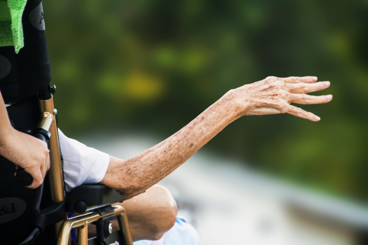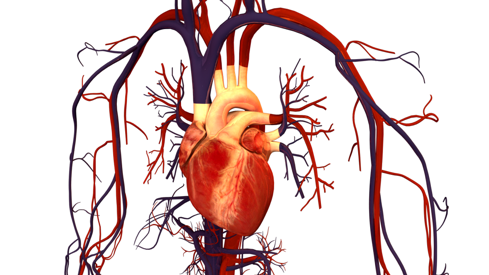Do you know that people can suffer from different types of vein disorders and diseases? While some of them are nothing to worry about and go away on their own, others require immediate medical attention and expensive treatments. Depending on an individual’s medical health status, they can become vulnerable to several vein disorders.

(Source)
Fortunately, there’re valuable treatment options that are also extremely effective. To help you understand the importance of vascular surgeries and other treatment options, we will discuss several vein disorders in this post.
Human Circulatory System and Venous Disorders
Blood vessels, among the main parts of your circulatory system, supply oxygenated blood to all parts of your body. Also, there are two main types of blood vessels in our body:
- Veins, that take deoxygenated blood towards the heart from other parts of the body
- Arteries, that take oxygen-rich blood from the heart to other parts of the body
Health issues can arise at any stage of life. When it involves damage to the circulatory system, i.e., venous and arterial system, vessel blockages can occur. This also increases the risk of various venous disorders.

(Source)
Common Types of Vein Disorders
Here’re some common types of vein disorders. While some of them progress slowly and aren’t as life-threatening as others, several venous disorders require immediate medical attention. Take a look and learn about the common venous disorder symptoms as well. Instant medical care is necessary in case you’re experiencing any of the issues below.
Deep Vein Thrombosis
DVT, for short, deep vein thrombosis, is a blood clot-related venous disorder that affects extreme parts of the legs and arms. For instance, when deep vein thrombosis takes place, frequent blood clots form deep inside the affected area. Mainly, it severely affects the lower extremities of the legs or the upper extremities of the arms. For the most part, the condition isn’t life-threatening, but blood clots inside the affected area can get lodged into the bloodstream by breaking through the vessel walls.
This can cause blood clots in different parts of the body internally. For example, blood clots can clog the blood flow inside the lungs, causing pulmonary embolism. Hence, it can become life-threatening without proper medical care.
Superficial Venous Thrombosis or Phlebitis
When a vein near the skin surface develops blood clots, it’s called superficial venous thrombosis or phlebitis. Although these blood clots near the skin surface don’t travel to the lungs easily, they can move from the superficial system of the body to the deep venous system. They’re usually painful and frequently cause discomfort. In the long run, without adequate care, they can become more painful to endure and cause discomfort even with the slightest movement of the affected area.
Chronic Venous Insufficiency
One of the most common venous disorders that affect obese, inactive, and/or elderly people is chronic venous insufficiency. It causes blood to pool inside the veins, causing them to swell up. It’s also a cause of leg ulcers and the appearance of bulging/twisted veins. High internal venous pressure can cause vein discoloration and pigmentation.
Unusual Blood Clots (Frequently)
Blood clots aren’t unusual, but when they keep frequently occurring without any relevant cause, such as cuts and bruises, especially around the legs and blood vessel clusters, they’re a sign of a venous disorder. Blood clots can affect internal organs like the spleen, intestines, liver, pelvic organs, and kidney drastically. Causing different types of symptoms and occasional discomfort, unusual blood clots can be difficult to cope with, especially if the patient is a person of old age.
Spider Veins & Varicose Veins
You must have heard or seen varicose or spider veins on some occasion. For instance, someone in your friends or family members might be struggling with it. It’s a common medical health issue that requires cosmetic treatment procedures since it causes large and clustered veins to bulge and appear twisted on the skin. In simple words, when the blood vessel walls experience some kind of weakness, it leads to blood vessel dilation.
Most Common Venous Disorder Symptoms
Once you develop one or more venous disorders, you will start experiencing several symptoms. These symptoms are widely common among people with typical venous disorders. Noticing the following symptoms on time can help you get required medical attention for effective relief and prevention:
- Excessive fatigue
- Slow healing leg sores
- Itchy and burning sensations on your leg
- Discolored leg skin
- Leg vein inflammation/swelling/unbearable pain
Keep in mind that the symptoms aren’t necessarily the same in every individual. If you’ve any underlying medical conditions from before, they can interfere with your latest-developing venous disorder. This can cause different symptoms to appear.
Types of Vein Disorders: Conclusion
Whether you’re struggling with a growing venous disorder or dealing with a chronic venous health issue, contact the Vascular Surgery & Vein Center today! Norman Chideckel, MD offers some of the best types of vascular surgeries, medications, and consultation services. Completing his residency in the respective field and working with highly educated and experienced individuals over the years, Dr. Chideckel has acquired vast experience helping patients with vein disorders.
Consult Dr. Chideckel today and learn about treatment options for your vein disorder. Call today!


